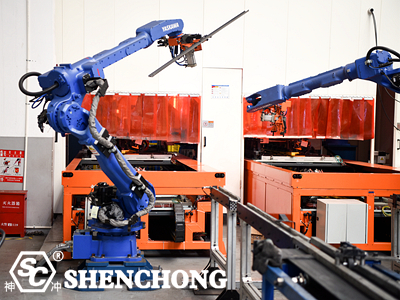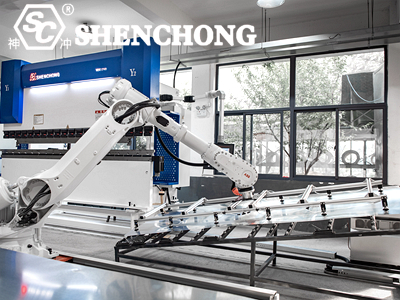
The reason why an intelligent robot is called an intelligent robot is because it has a fairly developed "brain". What works in the brain is the central processing unit, a computer that is directly linked to the person who operates it. The main thing is that such a computer can carry out actions arranged according to purpose. That's why we say that such robots are real robots, even though their appearance may be different..
A wide range of intelligent robots, the most profound impression it gives people is that it is a unique "living creature" that controls itself. In fact, the main organs of this self-control "living creature" are not as subtle and complex as real people.
Intelligent robots have a variety of internal and external information sensors, such as vision, hearing, touch, and smell. In addition to having receptors, it also has effectors, which serve as means of acting on the surrounding environment. These are muscles, or self-stepping motors, which move hands, feet, long noses, antennae, etc.
With the rapid advancement of computers, microelectronics, and information technology, the development speed of robot technology is getting faster and faster, and the intelligence is getting higher and higher. Intelligent robots have broad development space and application prospects in various fields such as ocean development, space exploration, industrial and agricultural production, military, social services, entertainment, etc. Robots are developing in directions such as intelligence and diversification.

Also externally controlled robots. There are no intelligent units on the robot body, only actuators and sensing mechanisms. It uses sensory information (including vision, hearing, touch, proximity, force, infrared, ultrasound, laser, etc.) to process sensory information and realize control and Ability to operate. Controlled by an external computer, the robots currently used in the small group competitions of the Robot World Cup belong to this type.
After design and production, the robot can automatically complete various anthropomorphic tasks in various environments without human intervention. The ontology of an autonomous robot has modules such as perception, processing, decision-making, and execution. It can act and handle problems independently like an autonomous person. Many countries attach great importance to the research of fully autonomous mobile robots. Research on intelligent robots began in the early 1960s. After decades of development, currently, intelligent robots based on sensory control (also known as second-generation robots) have reached the stage of practical application. Intelligent robots based on knowledge control (also known as autonomous robots) or next-generation robots) have also made great progress, and a variety of prototypes have been developed.
The robot conducts human-machine dialogue with the operator or programmer through the computer system to control and operate the robot. Although it has some processing and decision-making functions and can independently implement some functions such as trajectory planning and simple obstacle avoidance, it is still subject to external control.

It can only work rigidly according to the procedures prescribed by others. No matter how the external conditions change, it cannot make corresponding adjustments to the procedures, that is, to the work done. If you want to change the work done by the robot, humans must make corresponding changes to the program, so it has no intelligence.
To know more about Types of Industrial Robots in Sheet Metal
Have the ability to feel, identify, reason and judge like humans. It can modify the program within a certain range according to changes in external conditions, that is, it can adapt to changes in external conditions and adjust itself accordingly. However, the principles for modifying the program are stipulated in advance by humans. This kind of primary intelligent robot already has a certain degree of intelligence.
Click here to know: Robotic Manipulator Ultimate Guide
Industrial robots are a type of intelligent robots. Intelligent robots are developing rapidly. Let us take a look at the three key technologies used in intelligent robots.

In robot systems, autonomous navigation is a core technology and a key and difficult issue in the field of robot research.
Path planning technology is an important branch in the field of robotics research. Optimal path planning is to find a path from the starting state to the target state in the robot workspace that can avoid obstacles based on one or more optimization criteria (such as minimum work cost, shortest walking route, shortest walking time, etc.) optimal path.
The research goal of intelligent robots is not to completely replace humans. It is currently difficult to control complex intelligent robot systems solely by computers. Even if it can be done, it is not practical due to the lack of adaptability to the environment. Intelligent robot systems cannot completely exclude the role of humans, but require human-machine coordination to achieve system control. Therefore, designing a good human-machine interface has become one of the key issues in intelligent robot research.
The vision system is an important part of an autonomous robot and generally consists of a camera, an image capture card and a computer. The work of the robot vision system includes image acquisition, image processing and analysis, output and display. The core tasks are feature extraction, image segmentation and image recognition.
Multi-sensor information fusion technology is a very popular research topic in recent years. It is combined with control theory, signal processing, artificial intelligence, probability and statistics to provide robots with the ability to perform tasks in various complex, dynamic, uncertain and unknown environments. provides a technical solution.

Intelligent Robot Bending Unit
With the development of robot technology, traditional control theory has exposed shortcomings for physical objects that cannot be accurately analytically modeled and pathological processes with insufficient information. In recent years, many scholars have proposed various different robot intelligent control systems.